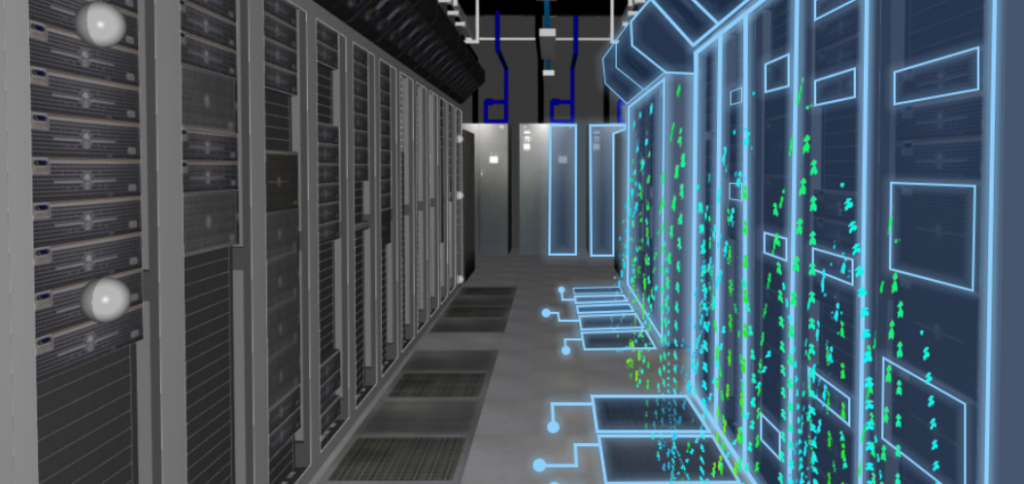
Data center demands are shifting rapidly in today’s energy landscape. A customer that signed on for 10 MW just months ago may now be requesting 40. For energy suppliers across the country, scenarios like this are becoming the new normal as artificial intelligence (AI) infrastructure accelerates load growth and turns predictable load patterns into risky financial challenges.
The AI race to the top has created a monster in energy consumption that few in the power industry could have anticipated before ChatGPT popularized the technology. According to the International Energy Agency, electricity demand from data centers worldwide is set to more than double by 2030 and quadruple for facilities optimized for AI.
COMMENTARY
Energy suppliers face forecasting and risk management challenges that traditional models simply cannot handle. While there is substantial risk, there is also an opportunity for smart energy suppliers to adapt their strategies and be a part of this rapid growth that’s reshaping energy markets.
Where the Power Shift is Happening
Understanding where this growth is concentrated is crucial for suppliers positioning themselves in the market, because it’s not happening evenly across the country. Virginia, particularly in PJM’s service area, has long been the nation’s largest data center hub. According to a report by the Institute for Energy Economics and Financial Analysis, demand in PJM is forecasted to double by 2040, with 85% of this new load tied to data centers. Recently, Atlanta emerged as the first market to top northern Virginia in data center net absorption, with 705.8 MW of positive net absorption last year, according to CBRE.
Each ISO presents its own set of challenges. PJM is grappling with overloaded transmission networks as new data centers continue to come online. ERCOT doesn’t have a capacity market, meaning forecasting errors can be financially devastating. In California, CAISO must balance increasing data center demand with aggressive renewable energy mandates, making reliability a constant concern. Suppliers operating in multiple markets must understand these regional nuances to avoid costly miscalculations.
The Myth of Predictable Load
Energy suppliers built their businesses on the assumption that commercial customers follow predictable patterns. Office buildings consume more power during business hours. Manufacturing facilities have scheduled maintenance windows. Retail establishments have posted hours. These patterns have been refined over decades, and form the foundation of load forecasting and risk management strategies.
Data centers change all of this. They don’t follow weather patterns, standard business cycles, or seasonal variations. Their consumption profiles depend on factors most energy professionals have never considered: server utilization rates, cooling efficiency improvements, workload migration patterns, and technology refresh cycles.
POWER is at the forefront of coverage for data centers, particularly related to how technology companies will source the power needed to operate their artificial intelligence ventures. Read our POWER Primer, “Focus on Data Centers,” and register today to attend our inaugural Data Center POWER eXchange event, scheduled Oct. 28 in Denver, Colorado
The real challenge isn’t just that data centers consume more power; it’s that their growth trajectories are fundamentally unpredictable. Historical energy consumption does not always reflect future demand. A facility might operate at 20% capacity for months while gradually adding servers, then jump to 80% capacity when a major cloud customer migrates workloads. A large ramp-up could leave suppliers scrambling to adjust if they base contracts on initial figures and actual demand surges beyond expectations. Many data centers are built with massive expansion plans in mind, and suppliers need to be ready for that jump.
While the energy demand of data centers is relatively steady and isn’t tied to weather fluctuations, that stability can mask significant financial risks. Data centers operate with minimal flexibility; they cannot shift operations to off-peak hours like other large energy consumers, making them poor candidates for traditional demand response programs.
Rethinking Risk in the Age of AI
Successfully serving data center customers requires abandoning traditional risk management approaches in favor of strategies designed for uncertainty. Real-time interval demand recorder (IDR) and advanced metering systems (AMS) can help suppliers refine their projections and make smarter hedging decisions. These systems provide the granular visibility needed to help suppliers identify consumption trends before they become major financial issues.
Hedging based on historical data alone doesn’t work in these situations. Block hedging allows suppliers to minimize exposure to sudden price fluctuations and is one of the most effective risk management strategies. Suppliers need to develop scenario-based hedging that accounts for rapid scaling events. This might involve purchasing options on power blocks that can be exercised if customer demand exceeds certain thresholds or structuring collars that limit both upside and downside exposure.
How contracts are structured becomes increasingly important when dealing with data center customers. Pure fixed-price contracts expose suppliers to unlimited upside risk if facilities scale faster than expected. Pure index contracts may be more appealing to cost-conscious data center operators but offer no protection against demand volatility. The most successful approaches often involve hybrid structures that share risk between supplier and customer while maintaining competitive pricing.
But beyond the strategies and paperwork, it’s the relationships with people that could be the most beneficial. By establishing transparent communication with data center operators around expansion plans, when capacity is being added, and expected usage patterns, suppliers can better anticipate demand shifts and structure contracts accordingly.
Despite the challenges, the data center boom represents a large growth opportunity for the energy supply industry. These facilities require enormous amounts of electricity and often have long-term contracts. It provides suppliers with the scale and duration needed to justify major investments in generation and risk management capabilities.
The data center boom is already reshaping energy markets, and this growth is not slowing down anytime soon as AI-driven applications demand more and more computational power.
For energy suppliers, this transformation creates both challenges and opportunities. Those who develop sophisticated forecasting models, implement effective risk management strategies, and build collaborative relationships with data center operators will discover significant opportunities to strengthen profitability while maintaining stable market positions.
—Daniel Cross, Ph.D., is director of Data Science and Reporting at POWWR.


















